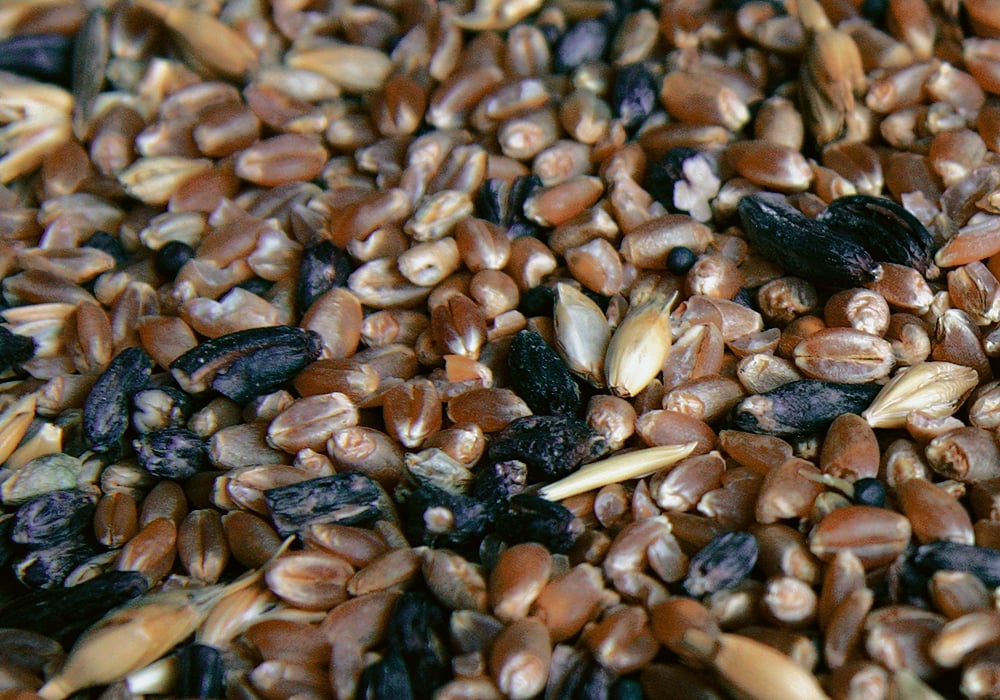The fungal disease has been helped by the wet start to the growing season on the eastern side of the Prairies
Glacier FarmMedia – In the midst of the growing season, some Manitoba crops are now showing signs of ergot, which can reduce yield and pose a problem for marketing grain, but there are ways that producers can fight back against the fungal disease.
Reports of ergot have been coming into Manitoba Agriculture, according to Anne Kirk, a cereals specialist with the province.
“We definitely have seen some ergot this year,” she said. “Rye is most susceptible to ergot. Wheat would be kind of medium on susceptibility, then barley would be least susceptible to ergot in terms of the cereal crops.”
Read Also

Alberta researcher helps unlock the economics of farming
Lethbridge Polytechnic researcher helping agriculture producers with decision-making tools in economic feasibility
Triticale is also susceptible to ergot, while oats are infrequently impacted.
Ergot also affects several types of grasses in Manitoba, including brome grass and other headland grasses like timothy and fescue.
“So typically, some of those headland grasses, or native grasses like brome, can get … that infection earlier in the season,” Kirk said.
Ergot overwinters as small, black sclerotia in soil and stored grain for about a year. In spring or early summer, these sclerotia sprout into tiny, mushroom-like structures that release spores. These spores are dispersed by wind, insects and rain, infecting open florets and immature seeds.
Earlier in the season, before ergot appears, individual flower heads may show an amber liquid known as honeydew. This sticky substance attracts dust and pollen, giving the heads a dirty appearance. As the season advances, ergot becomes evident when hard, purple to black structures replace the grains in the affected florets. These ergot bodies are often more concentrated at field edges and headlands but can spread throughout the field if contaminated seed or prior infections are the source.
“If you do see ergot more kind of spread out throughout the entire field, it may have come in through infected seed or from … a previous infection in that field,” Kirk said.
Cool and damp conditions in late spring and early summer — like what was experienced in much of Manitoba at the start of the growing season — favour the germination of ergot and prolong the flowering period, increasing the risk of infection. Self-pollinated crops like wheat are particularly affected, said David Kaminski, a field crop pathologist with Manitoba Agriculture.
“The reason we’re seeing (ergot) in some of the more self-pollinated crops, like wheat, (is because) when you have periods of prolonged rainfall, that causes the blooms to stay open for longer,” he said.
Ergot infection is heavily dependent on environmental factors, agrees Cordon Geisam, territory manager of western Saskatchewan and southeastern Alberta for FP Genetics. This is particularly true during the pollination window. Rain during this time can wash away pollen, making the crop more susceptible to ergot.
“If you’ve had areas where … the rye is pollinating, then you have a rain that drops the pollen, then the ergot spores can affect your flowers, and you get an ergot body,” Geisam said.
While there are differences between rye varieties, environmental conditions play the largest role in determining ergot outbreaks, while certain agronomic practices could inadvertently contribute to ergot issues.
“Seventy-five per cent of what happens is your environmental conditions…or some agronomic practices that we’re not doing right, that…actually promote ergot in that we have…tracks in the field, or we improperly sprayed some herbicides on at the wrong time, and different things,” Geisam said.
A field previously used for hay may have a higher risk of ergot spread due to previous grass infections. Producers are advised to avoid planting fall rye in fields recently used for hay to reduce the risk of ergot.
Exposed mature grain may lose up to 70 per cent of its ergot bodies due to high winds. Ergot causes both yield losses and potential grain downgrading, especially if contamination exceeds 0.25 per cent in wheat, according to Manitoba Agriculture’s website. To manage this, delay swathing in headland areas to allow wind to clear out ergot bodies and separate these swaths, as they are likely to have higher contamination levels.
Sclerotia return to the soil with straw, chaff or contaminated seeds, though they generally do not persist beyond a year.
Producers are advised to cut or burn adjacent grasses before they seed, Kirk said.
“Mow those ditch grasses before they come into head.”
Cleaning seed can also remove ergot bodies, she added. Deep planting or storing seed for a year to reduce viability can also help. Crop rotation also plays a pivotal role in the fight against ergot. Producers should avoid planting wheat after rye and should maintain a gap of at least a year between susceptible crops like rye, triticale, wheat and barley.
According to Geisam, fall rye crops in western Canada look healthy, and ergot doesn’t appear to be much of an issue in the fields he’s seen.
“I don’t think we should have a significant ergot breakout. I think in Saskatchewan, it shouldn’t be a devastation, other than regional areas if you did get a rain shower in your pollination window. That’s where the challenge will be,” he said.
Matthew Struthers, cereal crop specialist with the Government of Saskatchewan, says he isn’t surprised to hear that there have been hotspots of ergot in Manitoba due to the amount of moisture some parts of the province has received this year.
“Any extension to the flowering period will have led to a higher incidence of ergot,” he said. “Saskatchewan has lower risk of ergot due to the overly dry conditions across the province.”
The eastern half of Saskatchewan, where more rainfall occurred, will have a similar ergot risk as Manitoba’s hotspot, Struthers added. And while the disease doesn’t pose a huge threat to yield reduction, it can seriously affect grain quality.
“Contamination from the fungal bodies is something that is taken quite seriously,” he said.
Manitoba Agriculture says that currently, there are no resistant crop varieties or effective fungicides available, but testing soil for copper levels and applying copper fertilizer can help manage the disease in wheat and barley.
– With files from Janelle Rudolph
















